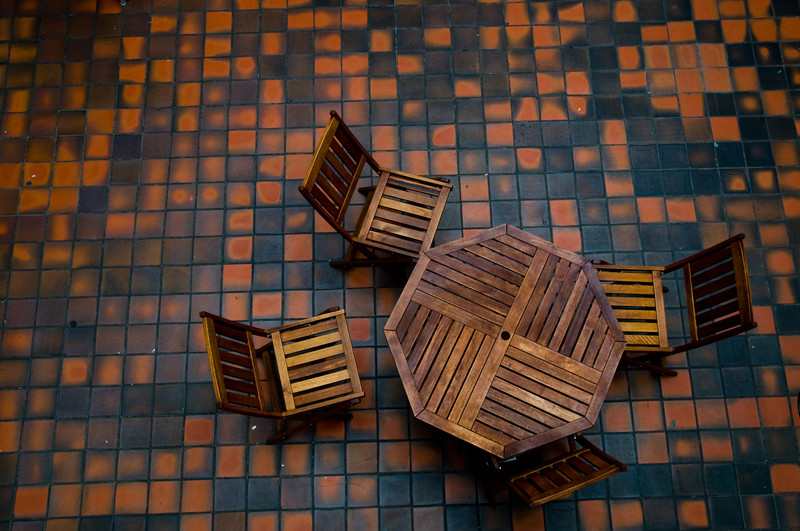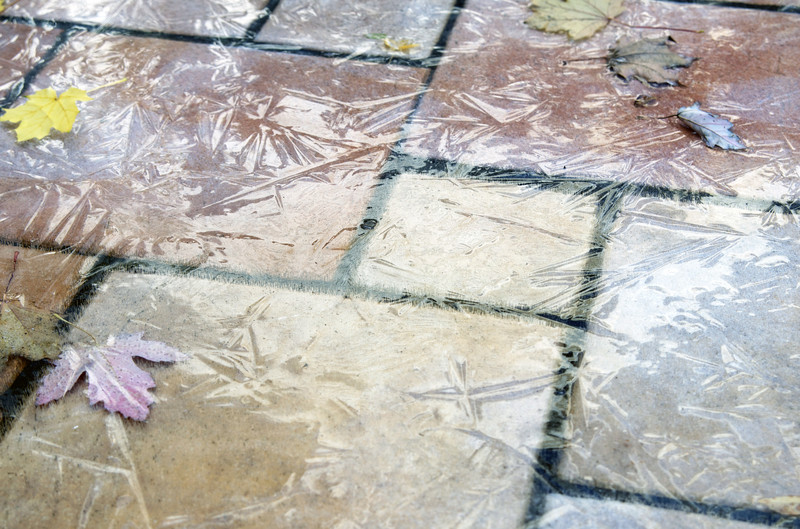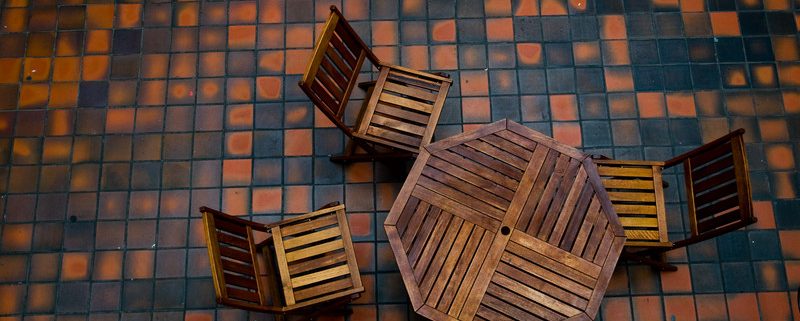Exterior Tile for Cold Climates
Be smart when selecting exterior tile in areas with cold climates.
Think about how the exterior tile will be used and the kinds of abuse to which it will be subjected. Consider the complete installation and how the various materials work as a system, including the intended substrate and all the materials: tile, mortar, grout, and sealant. Working together, properly selected materials will be able to withstand anything that winter throws their way.
As the weather turns colder, the prospect of the coming winter becomes more real. Take time to select frost-resistant materials and installations that will withstand our Midwestern weather extremes.
Selecting the Right Tile
Not all tile is created equal – in fact, there are a wide variety of tile product choices on the market. Choosing the right tile for the application and location is essential to long-lasting performance. Exterior tile installed in our climate needs to be resistant to slipping, chemicals, and harsh weather conditions.
 Cold Weather Challenges
Cold Weather Challenges
Cold weather locations present special challenges when it comes to tile products and installations. In the winter, the ground expands with frost and it heaves upward. As the weather changes, the ground begins to thaw and it contracts, moving downward. Exterior tile installations need to be able to handle all this up-and-down movement without cracking or chipping.
Tile Product & Installation Tips
Substrate
- The substrate (surface on which the tile is installed) must be solid and stable.
- Cover the substrate with an isolation membrane to isolate moisture and to prevent cracks from telegraphing through to the tile.
- Expansion joints are a given – allow for inevitable tile movement by providing joints over anti-fracture membranes.
Tile
- Go with a quality porcelain tile from a reputable manufacturer like Daltile or Virginia Tile.
- Tile porosity affects exterior performance. Choose tile that does not absorb much water. In the winter, the water-filled cells will expand and the tile will crack. Use tile that has a porosity level of 3% or less.
- Choose tile that is intended for exterior This may seem like a no-brainer but we do see interior tile installed outside – it lasts exactly one freeze-thaw season.
Mortar
- Use mortar that is compatible with the tile.
- Make sure to bond the tile to the substrate with complete mortar coverage.
- Freeze-thaw cycle resistance can be better achieved with polymer-modified thin-set mortars.
- Mortars with good bond strength, combined with flexibility will allow for movement in the substrate due to varying moisture levels.
Grout
- Use grout that is compatible with the tile.
- Polymer-modified grout is a good choice because it absorbs less water.
- Consider substituting grout additives for water when using standard grouts.
- Sealants may be helpful in preventing moisture from entering the tile assembly.
Sealant
- To protect the tile from stains and moisture, apply a sealant. Although porcelain tiles are often already sealed, natural stone and some other tiles may benefit from an application of sealant.
 Note! Pay attention to the outside temperatures during installation. Cold temperatures can wreak havoc on materials and cause longer curing times.
Note! Pay attention to the outside temperatures during installation. Cold temperatures can wreak havoc on materials and cause longer curing times.
Tile for Special Uses
In addition to cold weather temperature fluctuations, tile needs to be chosen based on the special use it will receive. Exterior areas in the Midwest are frequently wet, handle high traffic, and are exposed to chemicals.
Swimming pool decks, patios, and walkways are exposed to salt, water, sand, and many other corrosive and abrasive materials year-round. Exterior tile that is used in these areas really takes a beating! Dirt and debris are tracked-in on our feet; furniture and flower pots are dragged across tile; shovels scrape the tile’s surface; wind-blown leaves and trash stick to the tile, leaving a residue…
All of this use-and-abuse calls for special tile! In locations that are frequently wet, handle high traffic, or are exposed to chemicals, be sure to choose tile that is resistant to slipping, impact, and chemicals, as well as extreme temperature fluctuations.
The Complete Installation
Exterior tile is only one part of a successful tile assembly. Tile, mortar, grout, and the substrate all play an important part in an outdoor tile installation. Working together, a properly selected assembly will withstand the effects of low winter temperatures. Rely on your professional tile installer and reputable tile manufacturer for current advice for your own project location and use.
Be smart when selecting exterior tile in areas with cold climates. Take the time to select frost-resistant materials and assemblies that will withstand our challenging Mid-Western winters.
Sources of information on tile:
Tile Council of North America, Inc.
National Tile Contractors Association



